Days when we don't have to pack up the camper and drive to see sights are always a bonus. Our campsite, located just on the outskirts of Granada, had a bus stop right opposite it.
We were in Granada within fifteen minutes and caught a connecting bus up to the main entrance of the Alhambra. The Alhambra is essentially a complex of palaces – at its peak, there were nearly 2000 people living with its walls. It was the last Moorish stronghold in Europe until 1492 when the Christians completely conquered Spain. We met a nice English couple who were also going to visit the Alhambra and chatted with them until we reached the palace. Upon picking up our pre-booked tickets, we started our tour at the upper end of the complex, in the Generalife Gardens.
This was the sultan’s summer palace and also the site of the complex’s fruit and vegetable gardens. As we approached the palace, the gardens on either side were perfectly manicured and symmetric. The entrance to the palace began with a dismounting room (for dismounting from your horse) which included a water trough. The inner courtyard of the palace was a simply laid out courtyard with a central reflecting pool (the fountains were a 19th century addition – the Moors preferred the quieter sounds of water trickling or bubbling out of a fountain). The gardens in this palace were planted more than 600 years and are essentially the same today, which is quite remarkable. You could just picture the people privileged enough to gain entry to the summer palace, to be resting in the shaded portions of the courtyard, taking in the views of Granada beyond.
The water used throughout this palace and in the other palaces was not only used for aesthetic and religious purposes (water symbolizes purity in the Qaran), but also to direct water from the nearby river to the rest of the complex in a controlled manner. As we wandered through the gardens, we also came across a beautiful brick and stone staircase which had banisters that doubled as little water canals.
From the gardens, we made our way to the Alcazaba, the oldest and most ruined part of the complex. As we scrambled over the ruins, we got fine city views from its highest watch tower and views over the snow covered Sierra Nevada mountains. This fortress once defended the Alhambra’s 2000 residents. The fort was clearly designed to confuse any invaders as it was quite convoluted and also had steep staircases. We took in the defensive views over the city and the visible ruins of the fortress and then made our way back out for a quick lunch break. After lunch, we queued up for our 1:30 time slot to enter the Nazaries palaces, the gemstone of the Alhambra.
This was one of the finest examples of Moorish architecture and it really was a photographer’s delight. As we walked from room to room, we couldn’t take our eyes of the intricately complex plaster work, carved wood ceilings, ceramic tiles and aesthetically pleasing layout. Most of the palace walls have lost their paint, but in the odd spot or two, you could see some of red and blue paint. It was difficult to picture the entire palace painted in reds, blues, greens and golds (symbolizing blood, heaven, oasis and wealth respectively in the Qaran). Most of the decorative patterns on the walls are phrases from the Qaran although others describe the Alhambra. In fact, most of what is known about the Alhambra was gathered by reading these inscriptions. My favourite place within the palace was definitely the Courtyard of the Lions, with a fountain in the center supported by twelve lions. The story behind the lions is that since the lions were a gift from a Jewish leader, they probably represent the twelve tribes of Israel. What I found more interesting was that the fountain originally functioned as a clock, where only one lion would be spouting water at any given hour. When the Christians conquered the palace, they took apart the fountain to figure out how it worked and it has never functioned properly since.
Today, all the lions spout water at the same time. We were quite lucky to have seen the fountain in operation since the lions have been under restoration for the past few years.
After nearly an hour and a half wandering the palace, we made our way out and stopped off quickly in the Charles V palace. After conquering the Alhambra, Charles V built his own palace over the site of a previous palace. I personally don’t know why you’d waste that time and money (financed by a tax on Granada’s Muslim population) to do so when the Nazaries palace was quite sumptuous but I guess it was more to make a statement than anything.
This palace was quite simple compared to what we had just seen and was essentially a large circle within a square building. The big circular courtyard in the center doesn’t have a roof above it so it is unclear whether this was intentional or just not completed.
We left the Alhambra grounds through the Justice gate and walked down towards the old town of Granada at its base. We were approached by a couple ladies selling rosemary (don’t ask me why) but we had read about it in our guide book and their ploy seems to be to thrust rosemary into your hand and get you to pay for it. I shook my head and kept on walking and they so far have not bugged me twice. Meghan figures that they see that I’m probably from the subcontinent and figure that with my experience dealing with in-your-face hawkers, I won’t fall for their tricks. We did a short walking tour of Granada and I particularly liked the silk lane (a narrow lane where formerly merchants used to come to sell silk and other exotic wares).
Nowadays, it is a tourist trap with each store selling almost identical, stereotypical , lamps, cushion covers and interior decor from what seems like India and/or Morocco. We soon made our way back to the bus stand and along the way, picked up some freshly fried mini-doughnuts coated in icing sugar. They were fried in the neatest little contraption – batter is squeezed from a silo into a canal of hot oil. The donuts are nudged along and there are gates along the way to ensure they fry for the requisite time after which they are automatically lifted and dropped into the next batch of oil to continue frying. They are eventually lifted out of the oil and dumped into a little container where the attendant sprinkles the topping of your choice.
It had been a long but thoroughly enjoyable visit to the Alhambra and we were looking forward to few relaxing days ahead before meeting up with Keith in Madrid.
The Alhambra in Granada
Tuesday, February 05, 2013
 Granada, Andalusia, Spain and Canary Islands
Granada, Andalusia, Spain and Canary Islands
Other Entries
-
78Minh-Yen arrives!
Jan 1125 days prior Zarautz, Spain and Canary Islandsphoto_camera7videocam 0comment 0
Zarautz, Spain and Canary Islandsphoto_camera7videocam 0comment 0 -
79Tapas in San Sebastian
Jan 1224 days prior San Sebastián - Donostia, Spain and Canary Islandsphoto_camera37videocam 0comment 6
San Sebastián - Donostia, Spain and Canary Islandsphoto_camera37videocam 0comment 6 -
80Biarritz
Jan 1422 days prior Biarritz, Francephoto_camera27videocam 0comment 2
Biarritz, Francephoto_camera27videocam 0comment 2 -
81St. Jean de Luz
Jan 1521 days prior Saint-Jean-de-Luz, Francephoto_camera19videocam 0comment 4
Saint-Jean-de-Luz, Francephoto_camera19videocam 0comment 4 -
82An unforgettable lunch in Bilbao
Jan 1620 days prior Bilbao, Spain and Canary Islandsphoto_camera28videocam 0comment 1
Bilbao, Spain and Canary Islandsphoto_camera28videocam 0comment 1 -
83Sipping Port in Porto
Jan 1917 days prior Porto, Portugalphoto_camera64videocam 0comment 2
Porto, Portugalphoto_camera64videocam 0comment 2 -
84Batalha Monastery
Jan 2016 days prior Batalha, Portugalphoto_camera18videocam 0comment 0
Batalha, Portugalphoto_camera18videocam 0comment 0 -
85Nazaré, Alcobaça & Óbidos
Jan 2115 days prior Alcobaca, Portugalphoto_camera57videocam 1comment 0
Alcobaca, Portugalphoto_camera57videocam 1comment 0 -
86Lisbon
Jan 2313 days prior Lisbon, Portugalphoto_camera99videocam 0comment 0
Lisbon, Portugalphoto_camera99videocam 0comment 0 -
87Cromlechs, Cork Groves & Roman Ruins
Jan 2412 days prior Évora, Portugalphoto_camera25videocam 0comment 2
Évora, Portugalphoto_camera25videocam 0comment 2 -
88Boat trip around the Lagos rocks
Jan 2610 days prior Lagos, Portugalphoto_camera46videocam 1comment 0
Lagos, Portugalphoto_camera46videocam 1comment 0 -
89News Flash:Tourist spotted swimming in the Algarve
Jan 2610 days prior Lagos, Portugalphoto_camera3videocam 0comment 0
Lagos, Portugalphoto_camera3videocam 0comment 0 -
90Seville
Jan 288 days prior Seville, Spain and Canary Islandsphoto_camera70videocam 0comment 0
Seville, Spain and Canary Islandsphoto_camera70videocam 0comment 0 -
91White Hill town of Ronda
Jan 306 days prior Ronda, Spain and Canary Islandsphoto_camera39videocam 0comment 1
Ronda, Spain and Canary Islandsphoto_camera39videocam 0comment 1 -
92A Taste of Tangier
Feb 023 days prior Tangier, Moroccophoto_camera49videocam 0comment 3
Tangier, Moroccophoto_camera49videocam 0comment 3 -
93The Rock of Gibraltar
Feb 032 days prior Gibraltar, United Kingdomphoto_camera33videocam 0comment 1
Gibraltar, United Kingdomphoto_camera33videocam 0comment 1 -
94Paella feast in Nerja
Feb 041 day prior Nerja, Spain and Canary Islandsphoto_camera20videocam 0comment 1
Nerja, Spain and Canary Islandsphoto_camera20videocam 0comment 1 -
95The Alhambra in Granada
Feb 05 Granada, Spain and Canary Islandsphoto_camera85videocam 0comment 1
Granada, Spain and Canary Islandsphoto_camera85videocam 0comment 1 -
96Snacking our way through Madrid
Feb 116 days later Madrid, Spain and Canary Islandsphoto_camera41videocam 0comment 1
Madrid, Spain and Canary Islandsphoto_camera41videocam 0comment 1 -
97El Escorial: A cold grey palace
Feb 127 days later El Escorial, Spain and Canary Islandsphoto_camera6videocam 0comment 0
El Escorial, Spain and Canary Islandsphoto_camera6videocam 0comment 0 -
98Fascist Church, Aqueduct and Segovian Tasting Tour
Feb 138 days later Segovia, Spain and Canary Islandsphoto_camera27videocam 0comment 1
Segovia, Spain and Canary Islandsphoto_camera27videocam 0comment 1 -
99Holy Toledo!
Feb 149 days later Toledo, Spain and Canary Islandsphoto_camera63videocam 0comment 1
Toledo, Spain and Canary Islandsphoto_camera63videocam 0comment 1 -
100Modernisme sights in Barcelona
Feb 1813 days later Barcelona, Spain and Canary Islandsphoto_camera225videocam 1comment 1
Barcelona, Spain and Canary Islandsphoto_camera225videocam 1comment 1 -
101Day trip to Sitges
Feb 1914 days later Sitges, Spain and Canary Islandsphoto_camera11videocam 0comment 0
Sitges, Spain and Canary Islandsphoto_camera11videocam 0comment 0 -
102Cassoulet in Carcassonne
Feb 2621 days later Carcassonne, Francephoto_camera19videocam 0comment 2
Carcassonne, Francephoto_camera19videocam 0comment 2 -
103Albi: Toulouse-Lautrec & amazing cathedral
Feb 2722 days later Albi, Francephoto_camera15videocam 0comment 0
Albi, Francephoto_camera15videocam 0comment 0 -
104Bastides in the Lot
Feb 2823 days later Cordes-sur-Ciel, Francephoto_camera24videocam 0comment 3
Cordes-sur-Ciel, Francephoto_camera24videocam 0comment 3 -
105Return to Rocamadour
Mar 0124 days later Rocamadour, Francephoto_camera9videocam 0comment 0
Rocamadour, Francephoto_camera9videocam 0comment 0 -
106Market Day in Sarlat
Mar 0225 days later Sarlat-la-Canéda, Francephoto_camera21videocam 0comment 1
Sarlat-la-Canéda, Francephoto_camera21videocam 0comment 1 -
107Marquessac Gardens
Mar 0326 days later Vezac, Francephoto_camera29videocam 0comment 2
Vezac, Francephoto_camera29videocam 0comment 2 -
108Three "Plus Beaux Villages"
Mar 0427 days later Domme, Francephoto_camera18videocam 0comment 0
Domme, Francephoto_camera18videocam 0comment 0 -
109A day for chores
Mar 0528 days later Sarlat-la-Canéda, Francephoto_camera13videocam 0comment 1
Sarlat-la-Canéda, Francephoto_camera13videocam 0comment 1 -
110Relaxing in the Dordogne
Mar 0932 days later Beynac-et-Cazenac, Francephoto_camera54videocam 0comment 2
Beynac-et-Cazenac, Francephoto_camera54videocam 0comment 2 -
111Prehistoric Art in the Dordogne
Mar 1134 days later Les Eyzies-de-Tayac, Francephoto_camera15videocam 0comment 1
Les Eyzies-de-Tayac, Francephoto_camera15videocam 0comment 1 -
112Market Day in Brantome
Mar 1538 days later Brantome, Francephoto_camera23videocam 0comment 1
Brantome, Francephoto_camera23videocam 0comment 1 -
113Chateau de Fontainebleau
Mar 1740 days later Fontainebleau, Francephoto_camera53videocam 0comment 0
Fontainebleau, Francephoto_camera53videocam 0comment 0

 Granada, Andalusia, Spain and Canary Islands
Granada, Andalusia, Spain and Canary Islands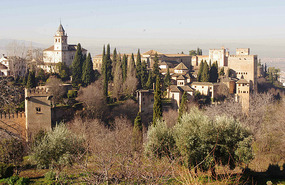
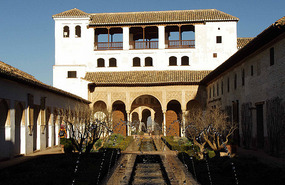
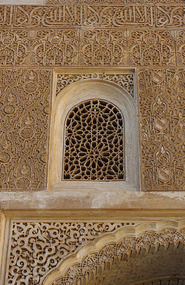
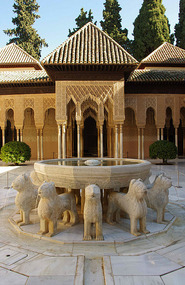
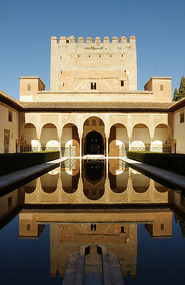





















































































2025-05-22